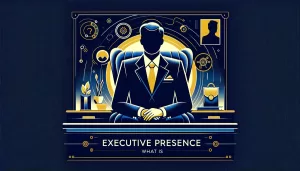Ideas are currency, and influence is power.
Yet, in this world, there’s a curious phenomenon: brilliant minds often remain in the shadows.
Why is this?
Meet Sarah, a software engineer with groundbreaking ideas about AI ethics. Her colleagues respect her, but outside her office, she’s unknown.
Now picture John, a coach whose strategies have quietly revolutionized the lives of many professionals.
Both Sarah and John represent a paradox in our professional landscape – experts without a spotlight.
This issue isn’t new.
History is littered with geniuses who lived and died in obscurity.
What separates the Sarahs and Johns from the Steve Jobs and Sheryl Sandbergs of the world?
It’s not just about being smart or having good ideas. There’s a recipe for thought leadership, a formula hiding in plain sight.
In this thought leadership examples guide, we’ll unpack this formula.
We’ll explore:
- The 6 types of thought leadership
- Examples of each of these types of thought leaders
By the end, you’ll see thought leadership not as a mystical gift but as a learnable skill.
A skill that, once mastered, can amplify your voice and ideas to reach millions.
So, are you ready to solve the puzzle of influence? To understand why some ideas spread like wildfire while others flicker and die?
Let’s begin our journey into the fascinating world of thought leadership by diving into the Latinpresarios Thought Leadership Archetypes Model,
Contents
Variables of the Thought Leadership Types Model:
This model is a lens through which we can examine the seemingly chaotic world of influence and find the hidden order within.
This model consists of six variables:
- The theory-practice spectrum
- The sophistication scale
- The exclusivity factor
- The scope of ideas
- The innovation impact
- The motivation matrix
Each of these elements plays a crucial role in the alchemy of influence. They’re the hidden gears in the machinery of thought leadership, turning raw expertise into magnetism.
As we go into these dimensions, we’ll uncover surprising truths. We’ll see how small shifts in approach can lead to tipping points in influence.
We’ll understand why some ideas stick while others slip away.
By the end of this exploration, you’ll have a new perspective on the thought leadership landscape.
More importantly, you’ll have a roadmap for your own journey from unsung expert to influential voice because we’ll share thought leader examples of each archetype in the model.
Theory or Practice:
This dimension assesses the balance between academic knowledge and practical experience in a thought leader’s background.
Understanding this can help you decide whether you will share insights grounded in rigorous research or real-world application.
Level of Sophistication:
This variable evaluates the complexity of a thought leader’s ideas and their communication style, which can range from highly specialized language to more accessible content.
This helps gauge whether your message aligns with the cognitive preferences and needs of your target audience.
Exclusive vs. Inclusive:
This aspect looks at the platforms thought leaders use to share their insights and how broadly they engage with different audiences.
It helps you understand whether you should make your insights readily accessible or confined to more exclusive circles.
Scope of Ideas:
This measures the breadth of topics a thought leader covers, from specialized expertise to a wide array of subjects.
This can guide you in choosing the range of topics you should cover in your thought leadership strategies.
Innovation and Impact:
Evaluating whether a thought leader is introducing new concepts or repackaging existing ideas can be crucial for those looking to be associated with cutting-edge insights versus foundational knowledge.
Motivation:
Understanding whether a thought leader is driven by fame, fortune, or freedom can provide context for their content and advice, helping you discern the authenticity and bias in their guidance.
Utility of the Thought Leader Types Model
By categorizing thought leaders into archetypes based on these variables, the model offers a nuanced framework to help you tailor you thought leadership journey.
This model empowers you to critically assess the vast landscape of thought leadership, enabling more informed decisions about how and when to share your expertise.
The Different Types of Thought Leaders
| Type/Variable |
The Visionary Scholar |
The Pragmatic Practitioner |
The Charismatic Influencer |
The Niche Expert |
The Revolutionary |
The Cultural Icon |
| Theory or Practice | High on theory, often holding advanced degrees and academic positions. | Leans heavily towards practice, with substantial experience in industry or as an entrepreneur. | May not have formal education in their area of influence but possesses a strong practical understanding or personal experience. | Balanced, with solid academic background and practical experience in a niche area. | A mix, often with a strong theoretical foundation complemented by radical practical applications. | Primarily practice-oriented, focusing on their specific craft or skill (e.g., music, acting, entertainment). |
| Level of Sophistication | Communicates complex ideas, often appealing to an audience with higher education and intellectual interests.
Their ideas might target the top of Maslow’s hierarchy, focusing on self-actualization and cognitive needs. |
Ideas are practical and accessible, designed to be directly applicable, often addressing the lower to middle levels of Maslow’s hierarchy, such as safety, belonging, and esteem needs. | Communicates in an engaging, relatable manner, often resonating with a wide demographic.
Ideas might touch on various levels of Maslow’s hierarchy, depending on the content. |
Tailors communication to the niche audience, which can vary in education and socioeconomic status.
Ideas often aim at solving specific problems, which might relate to esteem and self-actualization needs. |
Advanced, challenging conventional thinking and often engaging with an intellectually curious audience.
Their ideas are transformative, targeting self-actualization and transcendence needs on Maslow’s hierarchy. |
Communicates in a highly accessible manner designed to resonate with a broad audience.
The sophistication of their messages can vary greatly, often tailored to fit their branding and style. |
| Exclusive vs. Inclusive | Tends to be more exclusive, sharing insights in academic journals, conferences, and esteemed university settings. | Inclusive, using platforms like social media, blogs, and public speaking events to reach a broad audience. | Highly inclusive, leveraging platforms like YouTube, Instagram, and podcasts to reach a vast audience. | Selectively inclusive, sharing knowledge in specialized forums, niche publications, and targeted social media groups. | Can be exclusive in terms of the intellectual depth of their work but seeks to reach a broader audience to incite change. | Highly inclusive, with a significant presence on mainstream social media platforms, reality TV, and other mass media channels, reaching millions worldwide. |
| Scope of Ideas | Often focused on a specific domain but can introduce groundbreaking theories within that realm. | Ideas are typically focused on practical applications within their area of expertise. | Can vary widely, often speaking on a range of topics beyond their initial area of expertise. | Highly focused and professional, rarely straying from their area of deep expertise. | While focused on specific areas, they push the boundaries far beyond the current scope, often intersecting various disciplines. | The scope is often broad and not limited to their initial area of fame.
|
| Innovation and Impact | High on innovation, contributing new knowledge and perspectives to their field. | More about applying existing knowledge in innovative ways rather than creating new theories. | Impact is significant in terms of reach, though ideas may not always be new. The innovation lies in presentation and engagement strategies. | Highly innovative within their niche, pushing the boundaries of specialized knowledge. | Extremely high in innovation, aiming to redefine existing paradigms and create significant societal shifts. | Their impact is significant in shaping cultural trends and consumer behaviors rather than contributing new ideas or knowledge. |
| Motivation | Motivated by a desire for intellectual freedom and the advancement of knowledge. | Can vary but often driven by a mix of fortune (building a business or consultancy) and the desire to have a tangible impact on people’s lives. | Primarily fame, with a strong emphasis on building a personal brand and engaging with a large following. | Driven by a mix of freedom to explore their niche deeply and fortune from being a leading expert in a specific area. | Primarily driven by freedom—the freedom to challenge, innovate, and transform society. | Primarily driven by fame and fortune, focusing on maintaining and expanding their visibility and capitalizing on lucrative endorsements and branded partnerships. |
Thought leadership examples in each category
The Visionary Scholar
Noam Chomsky: Renowned linguist, philosopher, and cognitive scientist, known for his revolutionary theories in linguistics and his critiques of media and politics.
Brene Brown: Research professor who has spent decades studying courage, vulnerability, shame, and empathy, and is well-known for her TED talks and books on these subjects.
Yuval Noah Harari: Historian and author of bestsellers like “Sapiens” and “Homo Deus,” known for his profound insights into human history, society, and future.
Pragmatic Practitioner
Richard Branson: Founder of the Virgin Group, Branson is known for his entrepreneurial spirit and practical approach to business.
Sara Blakely: Founder of Spanx, Blakely revolutionized the shapewear industry with her innovative products. She started Spanx with a prototype and $5,000 in savings, without any formal higher education in business or fashion.
Tony Robbins: Entrepreneur, best-selling author, and life coach known for his seminars and self-help books that provide practical strategies for personal and professional development.
The Charismatic Influencer
Gary Vaynerchuk: Entrepreneur and internet personality who uses social media to share advice on marketing, business, and entrepreneurship.
Oprah Winfrey: Media mogul and philanthropist who has influenced millions through her talk show, book club, and philanthropic efforts.
Jay Shetty: Former monk turned motivational speaker and content creator, known for sharing wisdom and insights on mindfulness, relationships, and purpose.
The Niche Expert
Esther Perel: Psychotherapist and author, known for her expertise in relationships and sexuality, frequently speaking at conferences and on podcasts about modern relationships.
Neil deGrasse Tyson: Astrophysicist and science communicator, specializing in astronomy and science education through books, TV shows, and public appearances.
Jane Goodall: Primatologist and conservationist, renowned for her detailed observations of chimpanzees in the wild and her efforts in conservation and animal welfare.
The Revolutionary
Elon Musk: CEO of SpaceX and Tesla, known for his practical application of technology to revolutionize industries like automotive and space exploration.
Steve Jobs: Co-founder of Apple Inc., known for revolutionizing multiple industries, including personal computing, music, phones, and tablets.
Malala Yousafzai: Pakistani activist for female education and the youngest Nobel Prize laureate, known for her advocacy for education and women’s rights in the face of life-threatening opposition.
The Cultural Icon
Kanye West: Rapper, producer, and fashion designer, whose influence extends beyond music into fashion, politics, and culture.
Kim Kardashian: Media personality, socialite, and businesswoman, known for her influential presence in reality TV, social media, and the beauty industry.
Rihanna: Singer, actress, and entrepreneur, influential not only in music but also in fashion and cosmetics with her Fenty Beauty line.
Ready to leverage these thought leadership examples?
We’ve seen how the Revolutionaries and the Pragmatic Practitioners, the Academics and the Street-Smart Gurus, all play their part in shaping our intellectual landscape.
But you’re not just an observer in this story. You’re a potential protagonist.
But how do you make that leap? How do you find your voice in the cacophony of thought leadership?
The answer isn’t in more consumption. It’s in strategic action.
That’s where we come in. We’ve mapped the terrain. Now let’s plot your course.
Book a call with us. Let’s craft your thought leadership strategy.
Together, we’ll turn your experiences into insights, your challenges into content, your expertise into influence.
The world doesn’t just need more information. It needs your information. Your perspective. Your leadership.
Are you ready to shift from the audience to the stage? To move from footnote to headline?
Your voice matters. Let’s amplify it.
If you are more of a DIY person, you can leverage our personal branding template.






